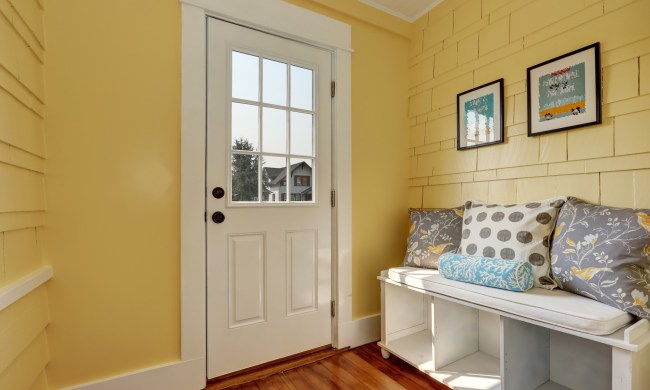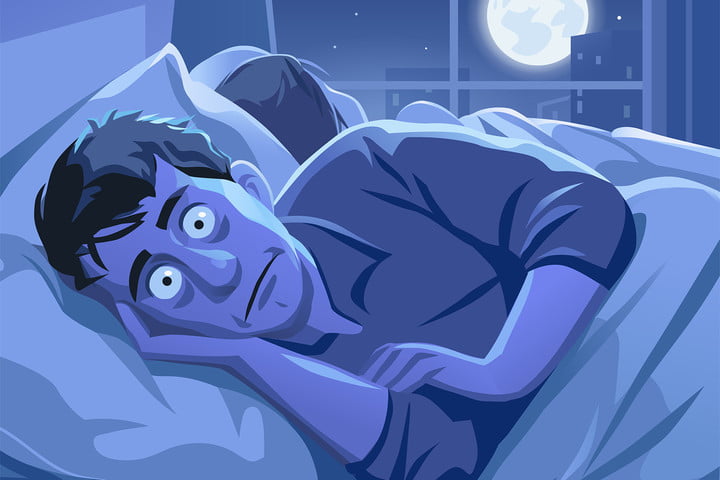
I have thankfully never been much of a snorer, though there was a brief period when my wife was so heavily pregnant she began to do convincing impressions of a demon-possessed grizzly bear. Like many other snoring sufferers, I hit the couch to get some precious shut-eye so I could function the next day. Luckily for me, her snoring evaporated as soon our daughter was born, but many sufferers are not so fortunate.
Snoring is often laughed off as a mild irritation, usually by snorers, but for long-suffering partners, it can be a serious nightmare. There’s a reason that sleep deprivation has long been used as a form of torture. As sleepless nights pile up, sufferers become irritable, resentful, and find it harder to concentrate. Prolonged periods of sleep deprivation can lead to lapses in judgment, disordered thought, and incoherent speech.
For many people, an unresolved snoring issue can spark the abandonment of the marital bed and if things get really bad it can even contribute to divorce. Around 90 million American adults snore, 37 million of them on a regular basis, according to the National Sleep Foundation. Little wonder then that a new segment of tech has taken off promising to bring sufferers sweet relief from the horrors of snoring.
The story you are about to read is true. Only the names have been changed to protect the innocent. After a recent night at a friend’s house, let’s call them Harry and Linda, I got a true taste of how bad snoring can get. Woken by what I assumed was a faulty boiler, I gradually began to wonder if there was construction in the area, before settling on the idea that Harry had decided to fire up a chainsaw and cut through the bedroom wall as some kind of macabre drunken prank.
Enquiring about the strange noise at the breakfast table the next morning I learned that Harry was a regular snorer and Linda was approaching the end of her tether. She had already taken to sleeping in the spare room after repeated kicking, shouting, and assault with a pillow had led only to arguments and fleeting respite. If I can get to sleep before he does it’s usually fine, she confided, but Harry’s snoring was clearly taking a toll on the marriage. Who better to serve as guinea pigs for an anti-snoring tech test?
Snoring denial
It’s pretty common for snorers to downplay their snoring or even deny it altogether, but as sleep tech has taken off, we have more data than ever before. The Sleep Cycle App boasts 36 million users and its research team has found that, on average, Americans retire at 11:39 p.m. and wake at 7:09 a.m. spending an average of 7 hours and 18 minutes in bed each night, 23.95 minutes of which is spent snoring.
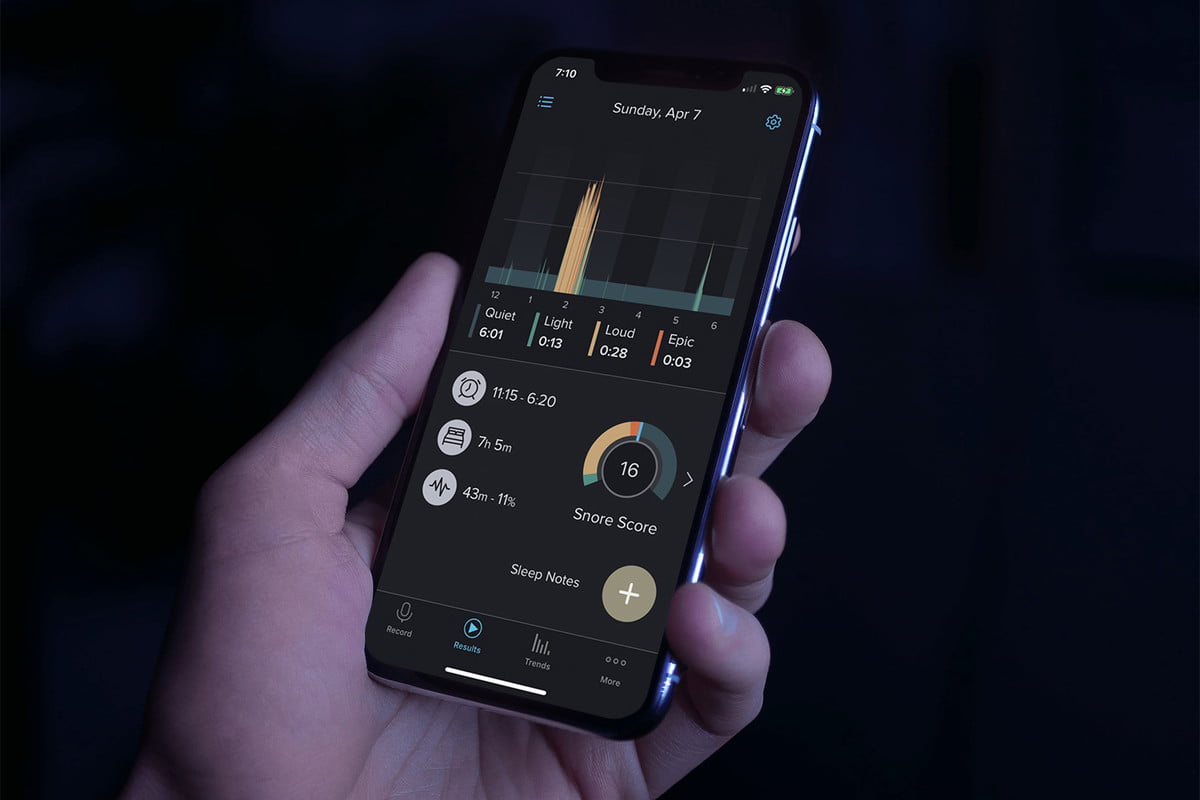
Like many snorers, Harry was skeptical about the severity of his snoring. We decided to establish a baseline with a smartphone app called SnoreLab, which is available for Android or iOS. It’s very easy to use – you install it and leave it running next to your bed and if it detects snoring it will record an audio clip and rate the snoring on a visual scale that goes from Quiet, Light and Loud, all the way up to Epic.
Harry scored an epic on his first night and sat there incredulous as Linda played back the audio file and the room filled with the sound of his snoring. Over a week of monitoring, it became clear he had a regular snoring problem and his attitude shifted. He was ready to try anything.
But before attempting to beat snoring, it’s important to understand why it’s happening in the first place.
Why do people snore?
“The main cause of snoring is a restricted airway,” Dr. Michael Breus, a clinical psychologist and sleep specialist also known as “The Sleep Doctor,” told Digital Trends. “The physics are quite simple.”
He uses the analogy of a garden hose with your thumb over the end which causes the water to squirt out faster.
“This is the same principle behind snoring,” he said. “As a person’s airway becomes smaller, air moves faster, which causes tissue in the throat to vibrate which leads to a snore.”
“Without treatment, sleep apnea increases risks for other serious medical conditions, including cardiovascular disease and type 2 diabetes.”
Being overweight is the number one reason for snoring, which explains why it’s common during pregnancy. Dr. Breus also cites alcohol, smoking, nasal conditions, and a family history of snoring as important risk factors. In some cases, snoring is a symptom of another sleep disorder: obstructive sleep apnea.
“Not everyone who snores has sleep apnea,” Dr. Breus said. But for those who do, it’s “a serious sleep disorder that requires medical treatment.”
Sleep apnea snoring is usually accompanied by pauses in noise followed by loud gasps, choking or snorting sounds. Thankfully, this doesn’t fit Harry’s snoring pattern, but partners who recognize this description should push the snorer to visit a medical professional.
“Without treatment, sleep apnea increases risks for other serious medical conditions, including cardiovascular disease and type 2 diabetes,” Dr. Breus said.
Having determined that sleep apnea is not the cause, Dr. Breus suggests lifestyle changes as the most effective way to reduce or eliminate snoring. But when faced with a choice between losing weight or quitting alcohol and smoking, it’s not surprising that many people are tempted by the promise of anti-snoring gadgets.
Over the course of two months, we tested four different devices for at least a week each, recorded the results, as well as the impressions of both the snorer and the sufferer.
Hupnos Sleep Mask
Billed as an intelligent sleep mask that analyzes your snoring habits and acts to curb them, the Hupnos Sleep Mask looked promising at first. The snorer must wear the mask at night and when it detects they’re snoring, it vibrates gently to encourage a change of position that should help open up airways and reduce snoring.
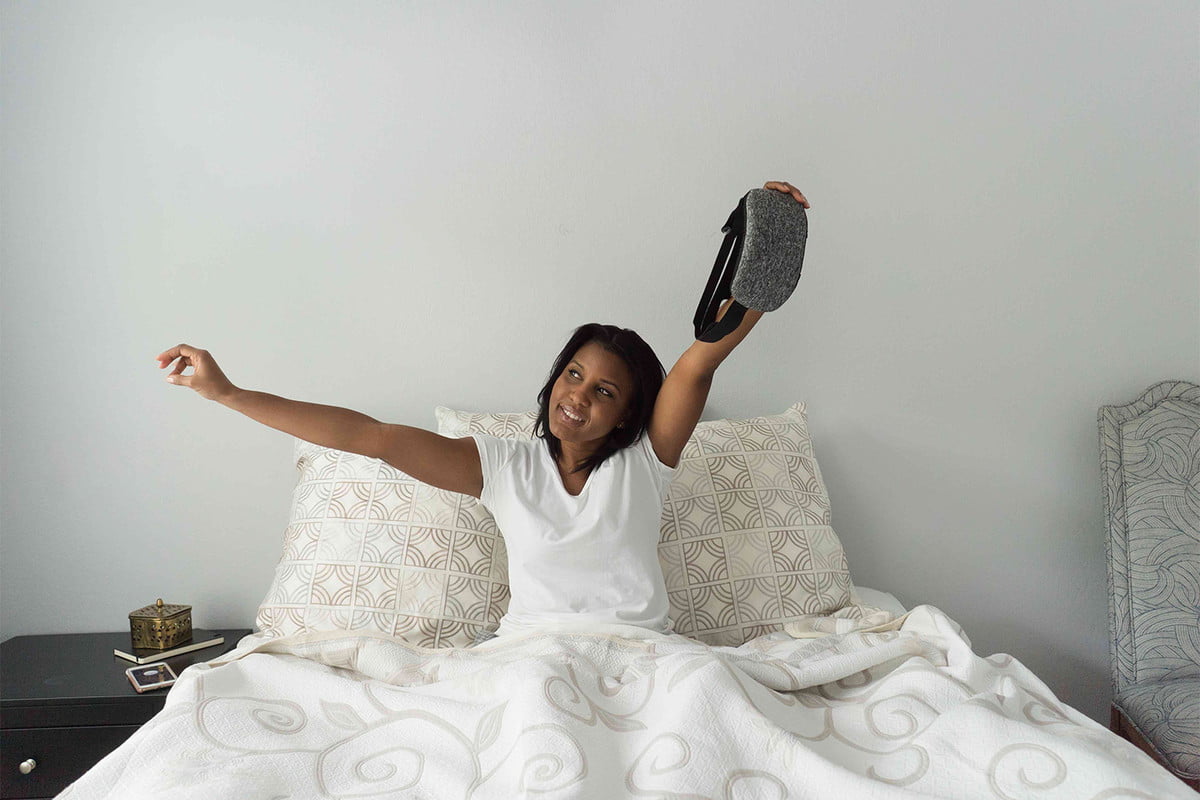
The way the mask works is that the app on your connected phone listens for snoring. Once snoring is detected, the mask can vibrate slightly to encourage a change of position or increase the pressure when you exhale, known as Expiratory Positive Airway Pressure (EPAP). It’s important to note that although the Hupnos mask uses EPAP, it is not designed to treat sleep apnea or replace a CPAP (Continuous Positive Airway Pressure) device.
I think most people would find the Hupnos mask restrictive and uncomfortable.
While Harry found the Hupnos sleep mask was great at keeping out light, and the microfiber mask and strap worked well, he disliked the rubbery section designed to go over your nose. It smells quite strongly and feels claustrophobic. Because the mask is fairly bulky, Harry felt it encouraged him to sleep on his back and Linda felt that it made his snoring worse. The vibrate feature didn’t seem to kick in very often – Harry said he didn’t feel it — but on at least one occasion it woke Linda rather than Harry.
Trying it out myself, I found the rubber nose module extremely uncomfortable. In fact, I couldn’t fall asleep with it on. I am blessed in the nasal department (okay, I have a big nose), but I think most people would find the Hupnos mask restrictive and uncomfortable.
Verdict: Fail. The Hupnos Sleep Mask didn’t reduce Harry’s snoring and he found it uncomfortable.
Bose Sleepbuds
Next up was a set of earbuds designed to mask noise. The Bose Sleepbuds are very small wireless earbuds that hook up to an app on your phone. You can choose from 10 different soothing sounds, such as waves lapping on a beach, heavy rain, or warm static. They’re supposed to match the frequency of snoring and help to mask it, just enough, so that you can fall asleep. It’s important to note they don’t use noise cancellation technology.
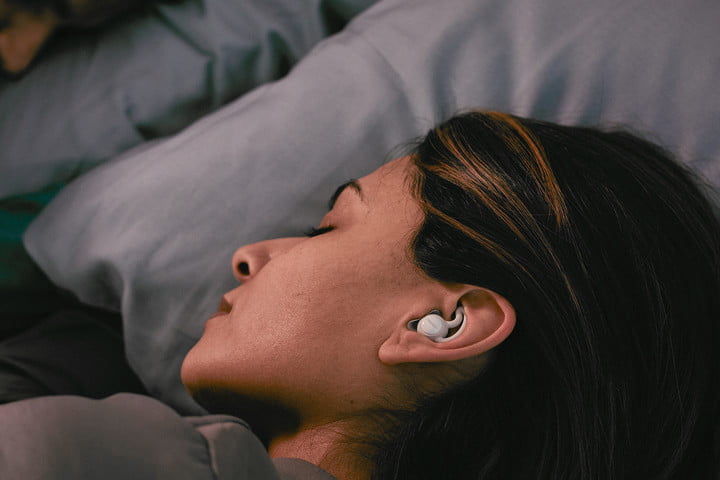
Linda found the Sleepbuds quite uncomfortable at first, but there are three sets of ear tips provided to help you get the perfect fit. It’s very important that the Sleepbuds form a seal. She eventually got the right size, but still found wearing the Sleepbuds for long periods a problem and as a side sleeper; they felt uncomfortable for her. The Sleepbuds obviously had no impact on Harry’s snoring but the noises did a good job of masking it, and Linda felt the relief from bouts of especially loud snoring might make the discomfort worthwhile.
If you regularly wear earbuds and don’t have issues with comfort, then the Sleepbuds will likely work for you.
If you regularly wear earbuds and don’t have issues with comfort, then the Sleepbuds will likely work for you. I tested them out and found they worked well to mask my tinnitus. They also have a smart alarm feature that will only wake the wearer, and they come in a super stylish charging case.
Verdict: Mixed. The Bose Sleepbuds won’t stop snoring, but they can mask it for suffering partners, provided earbud comfort isn’t an issue.
Zeeq Smart Pillow
We switched gears with the next gadget and tried a pillow. The Zeeq Smart Pillow has speakers and microphones built-in and it’s capable of playing music, sleep tracking, sleep analysis, playing a smart alarm, and supposedly reducing snoring. The Zeeq listens for snoring and when it hits a preset decibel level that you’ve set in the mobile app, it uses vibration motors to encourage the snorer to change position.
Harry was skeptical at first, but when he laid his head on the pillow he was sold straight away because he found it very comfortable. There’s a shredded memory foam filling and a special hypoallergenic fabric cover with moisture-wicking temperature control. It starts off by analyzing your sleep and snoring volume. Harry was averaging 53 decibels with a high of 83 decibels, which is louder than a vacuum cleaner and somewhere around a kettle boiling.
Linda felt there was a reduction in Harry’s snoring straight away, but when they set the decibel level down to 40 decibels, she went an entire week without being woken up by his snoring. Harry felt he was sleeping better too; he reported the vibrations were gentle enough that they were prompting a change of position without actually waking him. The efficacy of the Zeeq became clearer when they went on a short trip without the pillow and Linda was woken repeatedly in the hotel by Harry’s loud snoring.
Linda said she felt better rested and happier than she had in a long time.
Our test couple didn’t want to stop using the Zeeq. Linda said she felt better rested and happier than she had in a long time, and that this was the longest number of consecutive nights they had spent together in the same bed in years – usually one of them would spend a couple of nights a week at least in the spare room. There’s clearly a reason the Zeeq makes our best smart pillows list.
Verdict: Success. Both Harry and Linda reported better sleep and a drastic reduction in Harry’s snoring.
QuietOn Sleep Earplugs
Our final gadget comes from Finland and it’s another set of earplugs. But the QuietOn Sleep earplugs don’t play sounds or hook up to your phone, preferring active noise cancellation to drown out sound in your vicinity, including snoring. The fit is important, and you get a set of differently-sized ear tips in the box. Just like the Sleepbuds, it’s vital to form a seal for them to work effectively.
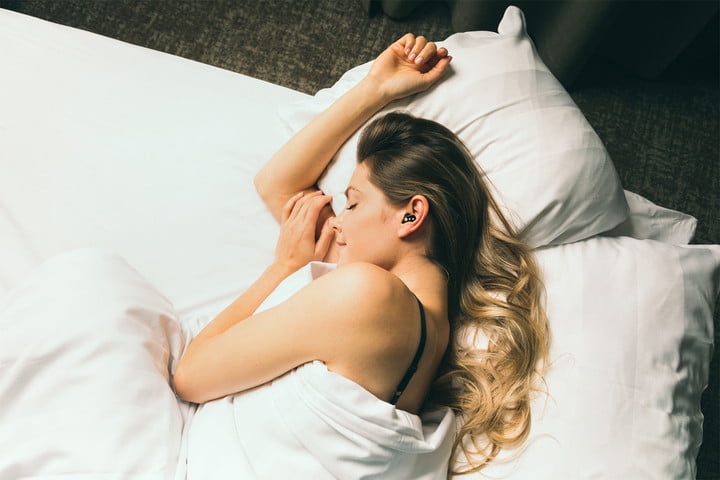
Once again comfort was an issue for Linda, and she found it difficult to fall asleep lying on her side as the earplug was pushed further in. But with the right ear tips and a proper seal, the QuietOn Sleep did a remarkable job of blocking out noise. It’s most effective against low frequency noises, like snoring, traffic, or airplane engines. Comfort issues aside, she found it effective in blocking out noise.
I could be in the room with a robot vacuum and hardly hear it, but when my wife spoke to me, the sound was crystal clear.
It can seem eerily quiet with the earplugs in, but there is a talk mode which you can activate by tapping the side of each earplug. Unfortunately, I found this a little tricky and it took multiple taps to get it to work – there’s no actual button, so you just have to listen to hear the difference. The QuietOn earbuds were very effective at blocking certain noises, so I could be in the room with a robot vacuum and hardly hear it, but when my wife spoke to me, the sound was crystal clear.
The QuietOn Sleep earbuds come with a portable charging case with a magnetic lid, and you can plug any standard charger into the Micro USB port. Charging time is just an hour and you’ll get at least a couple of nights worth of use (QuietOn says 20 hours) before you have to charge them. They’re suitable for any noisy environment where you’re struggling to sleep.
Verdict: Mixed. The QuietOn Sleep earplugs don’t reduce snoring, but they do block it out, along with any other low frequency noise.
Final Verdict
The clear winner in our tests was the Zeeq Smart Pillow, and it’s the device our now happy and well-rested couple are sticking with. If you don’t mind having something in your ears, then the Bose Sleepbuds and QuietOn Sleep Earplugs both have their charms. For people who crave absolute silence, QuietOn will work best, and for those who like a gentle background noise to lull them to sleep, Bose has you covered. The Hupnos Sleep Mask was the least effective of the bunch and I can’t see many people agreeing to sleep with their nose in a rubber plug.
At the end of the day, the Zeeq was not only the most effective, but also the cheapest and least intrusive for both the snorer and the sufferer. But everyone is different, so your mileage may vary.



